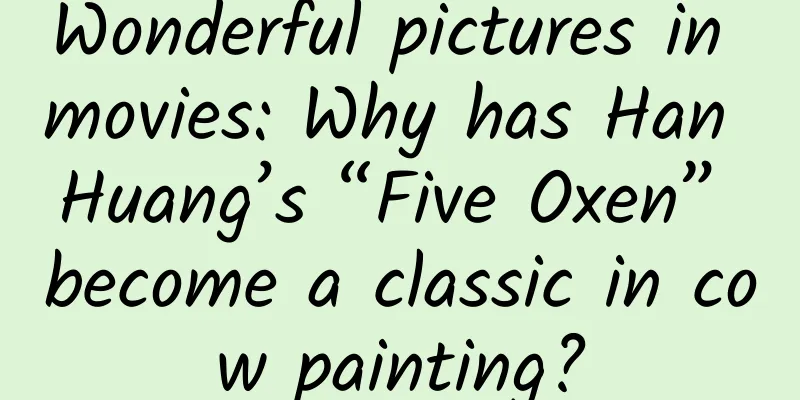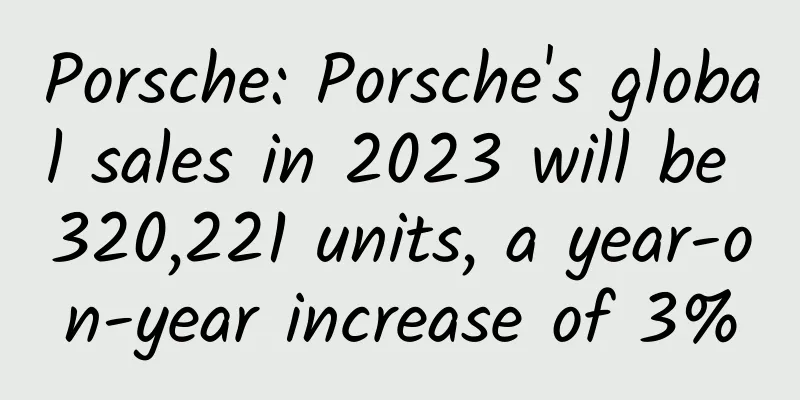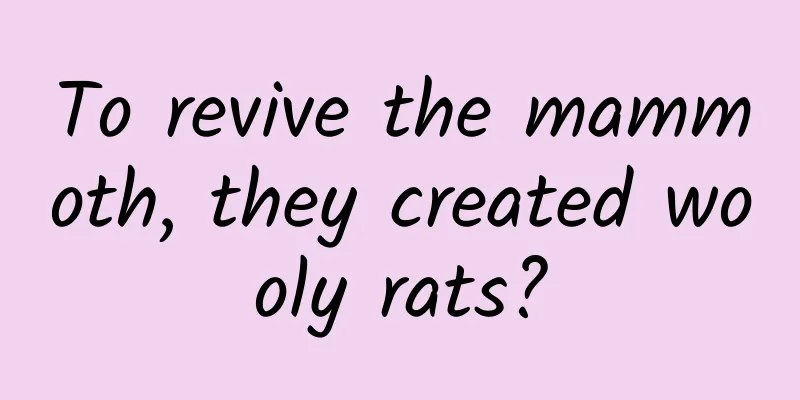Wonderful pictures in movies: Why has Han Huang’s “Five Oxen” become a classic in cow painting?

|
This year's film market is very lively. Zhang Yimou's "Article 20" uses legal provisions as a pretext to explore human nature, axioms and justice, which resonates with many viewers. If you watch the movie carefully, you will find that there is a painting "Five Oxen" hanging in the home of the male protagonist, Prosecutor Han Ming, which echoes his persistent character. In traditional Chinese culture, cattle are synonymous with hard work, steadfastness, and competence. Cattle have made great contributions to agricultural civilization, often silently devoting themselves throughout their lives and winning people's praise. For this reason, the good qualities of cattle are often used to describe the good character of people, and there are countless proverbs and stories about cattle... In the long history of Chinese painting, is there anyone who is good at painting cows? Some people immediately say Li Keran. Undoubtedly, the cows painted by Li Keran are lifelike, and he is extremely obsessed with cows. "I admire their nature and love their shapes, so I never get tired of painting them." Through the interaction between the shepherd boy and the cow, Li Keran not only painted the cow's spirit, but also expressed his yearning for the leisurely countryside. His representative works include "Spring Breeze" and "Returning Pasture". However, today's protagonist is not Li Keran, but a famous politician and painter in the Tang Dynasty - Han Huang. In terms of his political career, Han Huang, who governed the town well and pacified the southeast, achieved a position equivalent to that of prime minister, and was extremely powerful. In terms of his artistic career, he was good at calligraphy and painting, and his cursive calligraphy had the brushwork of Zhang Xu. He was good at animal painting and left behind the famous painting "Five Oxen". Han Huang, who was both civil and military, became a shining star in the Tang Dynasty. It is puzzling that how could Han Huang, who was in a high position and had great power, be so interested in animal paintings? Why did his "Five Oxen Picture" become a classic of ox paintings? In fact, due to the key role of cattle in agricultural production, rulers of all dynasties have attached great importance to cattle, and the Tang Dynasty was no exception. Emperor Taizong of Tang once issued an edict that "cattle are used for farming and crops, and many of them are slaughtered, which is deeply against compassion", affirming the importance of cattle and expressing opposition to the act of slaughtering oxen for farming. Protecting cattle is protecting agriculture, which is to protect the foundation of rule for survival. Han Huang naturally understood this well. Before entering the court and becoming a prime minister, he mostly served in local positions and had a lot of contact with the people in the jurisdiction, so he was no stranger to animals. As for the exquisiteness of "Five Oxen Picture", it goes beyond the painting itself and contains rich political meanings. The name of the work is worth pondering. Why are there five cows instead of other numbers? Zhao Mengfu mentioned in the inscription of the painting that "Five Cows" evolved from "Two Cows" painted by Tao Hongjing, a Taoist priest during the Southern Qi and Liang dynasties. At that time, Emperor Wu of Liang wanted to employ Tao Hongjing, who painted two cows, "one with a golden headband and the other free in the water and grass." Emperor Wu of Liang saw that Tao Hongjing did not want to be an official and did not force him. In addition, there are many different opinions about "Five Cows" among the people, including the five elements of gold, wood, water, fire and earth, the five virtues of benevolence, righteousness, courtesy, wisdom and trustworthiness, the five blessings of happiness, wealth, longevity, happiness and wealth, the directions of east, west, south, north and center, and the brothers of Han Huang's family. The Five Oxen is more than a thousand years old and is a rare work on paper. In ancient times, there was a saying that "paper lasts a thousand years, silk lasts eight hundred years", and this work strongly confirms this saying. Han Huang depicted five oxen lined up from right to left, with a simple composition but full of skill. The first ox is a brown old ox. While chewing something in its mouth, it tilts its head and scratches itself against a bunch of wild jujube thorns. At that time, there were many wild jujube thorns in the suburbs of Chang'an, Jingzhao. The intoxicated ox eyes and comfortable expression allow the viewer to personally feel its comfort and enjoyment. The second ox is a black and white mixed ox, with a strong body, holding its head high and shaking its tail, and walking slowly. The third ox is a dark ochre old ox, standing upright in the center of the scroll, facing the viewer. Its white ears, white horns, white lips, white belly and drooping chest all show its old age, but its eyes are bright and energetic. The fourth cow is a yellow cow, with a huge body and hard horns. It is playfully sticking out its tongue and looking back, looking particularly playful. The fifth cow is a yellow cow with a bridle. It has a plump body and seems to be thinking about something. Its eyes reveal its stubborn character. With the cow in the middle as the axis of symmetry, the cows on both sides have different postures, which is quite refreshing. Han Huang used relatively thick and slightly abrupt lines to express the thickness and toughness of the cowhide, thick ink and firm brushstrokes to show the hardness of the cow's horns and hooves, the fine hair on the cow's mouth and nose, and the depiction of the cow's eyelashes played a magical effect of "adding the finishing touch". Only by knowing the living habits and demeanor of cows, can such a vivid image be drawn. Emperor Qianlong directly wrote a poem in the painting: "One cow is tied up and four cows are idle, Hongjing's high feelings are in the imagination; licking the ox is not only to boast of being like a song, but also to understand the people's hardships by asking about their breathing." He did not agree with Zhao Mengfu's statement that "The Five Oxen Picture originated from Tao Hongjing's Two Oxen Picture", but implied the allusion of "Bingji Asking the Oxen". During the Western Han Dynasty, Prime Minister Bingji went out on business and did not care about the fights on the street, but was very concerned about the situation that the farmer drove the ox forward and the ox staggered. The attendant was puzzled and asked, Bingji replied that local officials would manage fights, but in today's not-so-hot spring, the cows shouldn't be panting like this, reflecting the abnormal weather, which would affect the harvest. Bingji was relieved when the attendant confirmed that the cows were abnormal because they were sick. The different interpretations of "Five Oxen" are precisely the rich connotations of this painting. The painting not only depicts the docility and perseverance of the cow, but also metaphorically represents the various stages of life. From the ambitious start of life, to the success in career, to the accumulated thinking in middle age, to the confident look back on career, and finally to the unwilling resistance to fate. Some experts infer from Han Huang's situation that although he holds great power, the transfer order from the local to the central government is "promotion in name but demotion in secret". In order to avoid the emperor's suspicion and to show his loyalty, Han Huang is using the painting to speak, preferring to be a diligent and dedicated old ox, doing his best for the stability of imperial power and the country. Once you enter the political world, you will be free in your dreams from then on. Perhaps the cow with shackles and a resolute expression is the most in line with Han Huang's state of mind. The Five Oxen Painting was first handed over to artists and emperors, and then wandered overseas for a long time. Finally, after untold hardships, it returned to the motherland in Hong Kong. When it was handed over to the experts, it was severely damaged. It was not only blurred, but also full of holes of various sizes. After the restoration work, it was presented to the audience with a brand new look, which set off a big climax of the visit. The painting is a true display of the painter's emotions. Through the Five Oxen Painting, the audience can understand Prime Minister Han Huang's concern for the "difficulties of people's livelihood" and learn the precious spirit of simplicity, kindness and loyalty of the oxen. |
>>: People who often do this have younger brains! Check if you have done this
Recommend
Even bullets can’t break it, why is Rupert’s Tear so magical?
There is a very interesting little thing called &...
Guangzhou recipe mini program function, how much does it cost to develop a home cooking mini program?
As those born in the 1990s and 2000s have started ...
On the tenth anniversary of Double 11, a comprehensive summary of strategies and gameplay on major platforms!
Unknowingly, it is already 3 days to the countdow...
Can crabs be raised in the desert? Yes, they are coming to your table soon!
Produced by: Science Popularization China Author:...
Want to build a quality community? You need to give your users a sense of superiority!
All gatherings of people formed because of content...
How to build a product operation and promotion system for two-dimensional products?
The analysis in this article is mainly to underst...
The Analects of Confucius tells us: Square dancing is the code for traffic!
Mixed Knowledge Specially designed to cure confus...
How much does it cost to create a flash sale mini program in Bijie?
There are two types of Bijie flash sale WeChat ap...
Hanwen's "One person, one course, learns to create a popular short video account" from 1 to 10, creating the whole process
Course Contents: 1-Lesson Program-10 minutes to s...
A star has fallen! Remembering Academician Huang Xuhua: He lived in anonymity for 30 years and worked hard for national defense
Today (7th) China Shipbuilding 719 Institute issu...
When the river meets the ocean: an amazing estuary adventure
All rivers flow into the sea, which not only refe...
How to quickly get 1000 followers on Douyin?
It is not difficult to achieve the threshold of o...
Tencent Weishi launches video red envelopes, which may be a very special red envelope gameplay this year
Grabbing red envelopes can be said to be the most...
How do Xiaohongshu and Zhihu quickly and effectively tap into seed customers?
In the early stages of a product, it is necessary...
Important reminder: These 4 diseases are most prevalent in March!
March The earth warms up and everything recovers ...









